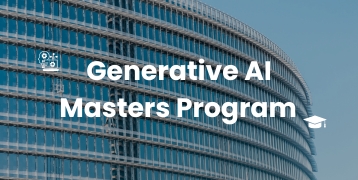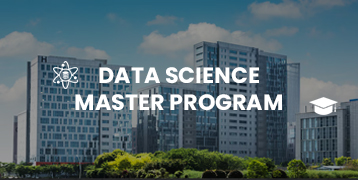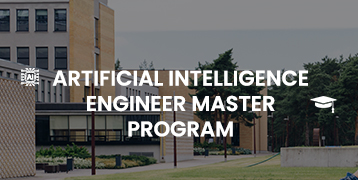
Table of Contents for IT Skills that Tech Leaders Need
- Introduction to IT Skills that Tech Leaders Need
- Key In-Demand IT Skills
- Data Science and Analytics
- Programming Languages
- Cloud Computing
- Artificial Intelligence (AI)
- Machine Learning (ML)
- Cybersecurity
- Software Development
- DevOps
- IT Infrastructure
- System Architecture
- Communication
- Additional Tips for Advancement
- Stay Updated
- Seek Mentorship
- Network
- Take Courses
- Refresh Your Resume
- Conclusion
Introduction to IT Skills that Tech Leaders Need
With the current speed of the digital world, technology leaders are expected to drive competitiveness and innovation within their organizations. To be effective as such leaders, tech leaders ought to possess a set of IT competencies beyond simple technical knowledge. They should possess solid knowledge in emerging technologies such as cloud computing, artificial intelligence, and cybersecurity and be capable of making informed decisions as well as guiding their teams.
Apart from that, technology leaders can use data analytics skills to utilize insight in the making of strategic decisions and problem-solving by their organizations. Another set of similarly vital soft skills used by leaders in managing cross-functional teams and building a culture of ongoing learning include communication, collaboration, and flexibility. Knowledge of project management methodologies like Agile and DevOps also comes in handy in technology solution delivery.
Technology leaders should be aware of changing tools and frameworks so that their organizations embrace the latest technologies for building. By integrating technical expertise and leadership acumen, they can synchronize IT and business objectives, driving innovation and transformation. Building these key IT competencies enables technology leaders to solve advanced issues and drive their organizations toward long-term success in the digital economy.

Key In-Demand IT Skills
Leading IT skills are concerned with the technology that supports digital transformation. Cloud computing platform skills like AWS, Microsoft Azure, and Google Cloud are of gigantic scale since companies shift toward scalable, agile infrastructures. Cybersecurity skills are essential to maintain confidential information safe and safeguard against increasing cyber attacks.
Besides this, machine learning and data analytics functionality enables businesses to make informed data-driven decisions, automate processes, and draw meaningful conclusions. Python, Java, and JavaScript continue to be essential programming languages in building reliable software systems. With technical competence, awareness of DevOps practices and tools enables teams to deploy software more quickly and reliably using continuous integration and deployment.
Besides, creative problem-solving, good communication, and flexibility are all key soft skills that further support teamwork and creative thinking in the fast-paced work environment of today. When combined, these skills equip IT professionals for the multifaceted challenges of today’s tech-based industries and propel the success of their business.
Data Science and Analytics
Data Analytics and Data Science involve collecting, processing, and analyzing large volumes of data to obtain meaningful insights to guide well-informed business decisions. Data Science combines programming, statistics, and business knowledge to search for trends and patterns, while Analytics is more focused on interpreting the latter in order to solve practical problems. For example, a company could apply data science to gather insight into customer buying behavior so that it can execute targeted campaigns that will drive sales.
It begins with the collection of data from social media, sales, or sensors. Cleaning and pre-processing of data later convert the raw data into an analytically ready condition. Python, R, and SQL are just a few of the computer programs that data scientists employ to load machine learning models and statistical algorithms onto the data to search for correlation or predict future trends. Analytics experts then provide decision-makers with these outcomes in a report and dashboard format to enable easier actionability.
With the ability of Data Science and Analytics, experts empower organizations to initiate maximum operations, improve customer experiences, and achieve competitive advantage. The new discipline offers several career opportunities in healthcare, financial, marketing, and technology industries and hence is an invaluable set of skills in the modern world of data.
Programming Languages
Programming languages are the backbone of software development and are at the heart of creating applications, websites, and computer programs in various industries. They are the language with which computers and developers communicate, allowing us to create anything from enterprise systems to mobile applications. Simple programming languages such as Python training are prevalent in web development, data science, and artificial intelligence. Java remains an enterprise application workhorse, with JavaScript powering interactive web page behavior. C and C++ offer low-level access, naturally best suited to system software and performance-intensive applications.
In contrast, programming languages like R are purpose-built for statistical computing, whereas SQL is king in database management. The most appropriate programming language is subject to project needs, platform support, and performance demands. Programmers need to be sensitive to new programming languages and frameworks in line with technological advancements. Knowledge of programming languages not only improves problem-solving but also opens the door to various job opportunities in programming.
Cloud Computing
Cloud computing refers to the utilization of computer capacity, namely, servers, storage, databases, networking, software, and analytics over the web on demand, or the cloud. Rather than hardware servers or data centers, users and businesses can lease such capability on-demand from cloud providers like Amazon Web Services (AWS), Microsoft Azure, or Google Cloud Platform. It is superior in flexibility, scalability, and cost effectiveness in that only customers have to pay for what they consume.
For example, imagine a new web business with on-and-off increases of heavy web usage during holidays. Rather than having to make an investment in millions of pricey equipment that is idle during slack times, the business can make use of cloud computing to adjust their server needs dynamically when it is busy and reduce when not so busy. As holiday shopping frenzies hit their boiling point, the cloud infrastructure will expand to absorb more visitors without a glitch. When the demand subsides, the firm offloads lower capacity by dialing back its scale as it seeks to rein in costs.
Cloud computing also allows for rapid innovation and collaboration as teams of individuals can communicate and exchange information and programs anywhere in the world. Cloud computing revolutionized the way organizations operate by improving the usage of technology and simplifying it.

Artificial Intelligence (AI)
Artificial Intelligence is a type of computer science that deals with the development of machines and computer programs capable of executing any task human intelligence is capable of carrying out. They encompass learning, reasoning, problem-solving, natural language processing, and perception. Artificial Intelligence training systems can interpret vast amounts of information, identify patterns, and make decisions autonomously or with minimal human input.
One of the largest examples of such widespread application of AI in our lives would be voice assistants such as Siri, Alexa, and Google Assistant. Voice-controlled AI devices such as these can listen to our voice, respond to our questions, remind us, and even turn off home lights to make our life convenient. Examples would be suggestory algorithms for web streaming platforms such as Netflix or web shopping platforms such as Amazon. They are user- and behavior-driven to recommend movies, TV shows, or products to an individual based on interest.
Artificial intelligence technology is revolutionizing industries, too, from medicine where physicians now have AI at their elbow when trying to diagnose illness and customize treatment to autonomous cars employing AI to take them where they’re going. As it takes on ever more of the drudgery and toil of everyday existence, making everything more high-tech and easier in so many ways, AI also spawns hellish social and ethical problems.
Machine Learning (ML)
Machine Learning Training (ML) is an area of artificial intelligence where computers learn to get better at a particular task based on data without programming. In contrast to executing pre-coded instructions, ML systems classify, make choices, and get better by examining large volumes of information. For example, in email services, ML applications automatically filter out unwanted emails by learning from millions of examples of spam and legitimate messages.
There are various machine learning types, such as supervised learning, in which the model is trained on labeled data, and unsupervised learning, in which the system learns hidden patterns in unlabeled data. ML applications reach nearly every industry from health, where it is used to detect illnesses, to finance, where it is used to identify fraud.
Using ML, companies can automate complex activities, extract beneficial information, and enhance decision-making. Machine learning has therefore become a central technology for innovation in contemporary times.
Cybersecurity
Cybersecurity is the safeguarding of networks, information, and computers against unauthorized use, cyber attack, and damage. In light of the age and era of dwelling in a cyber world where data is computer-stored and transferred electronically, cybersecurity is used to safeguard private data from cyber attack such as phishing, malware, hacking, and ransomware. Cybersecurity Training is the use of a mix of technologies, processes, and procedures whose function is to discourage cybercriminals from accessing data or meddling with services.
For example, an online bank is contemplated. In the absence of robust security measures within cyber-security, the hackers will gain control of the customers’ accounts, resulting in money loss and identity theft. Banks thus employ robust encryption, multi-factor authentication, and live monitoring of suspicious transactions. Banks also educate employees regarding how to identify phishing cons, spoofed emails with the intention of misleading users into giving passwords or other privacy concerns.
Good cybersecurity needs an alert eye and consistent maintenance because cyberattacks always change. People and institutions can safeguard their online possessions and be secure online by staying current and complying with cybersecurity practices.
Software Development
Software development is a sequential process of designing programs, applications, or systems that meet certain requirements or solve specific issues. It consists of different steps, i.e., planning, design, coding, testing, and maintenance. The languages used to write the code are Python, Java, or C++. Tools and frameworks make the process simpler. Collaboration of team members like designers, testers, and project managers is an integral role in successful software development to provide quality products.
For example, an online store-building company. The development team begins by studying the business needs like product pages, cart, and payment security. They plan the site user interface for usability and begin coding the backend and frontend. Once they test heavily to eliminate bugs and have it run smoothly, the site becomes live. The team keeps on making changes in the site to introduce new features and enhance security.
Software development takes priority in today’s digital age, driving everything from smartphone apps to business solutions. It drives innovation and maintains businesses competitiveness with secure, intuitive software.
DevOps
DevOps is a cultural and technical practice that integrates IT operations (Ops) and software development (Dev) to deliver more competitive products and services with a faster turnaround. It involves collaboration, automation, and continuous efforts to perfect every phase of the software lifecycle.
Similar to the example of a mobile app firm. Dev would write and then hand it over to ops for deployment and that can result in slowness and miscommunication. DevOps avoids that segregation. Both teams are well integrated with automated tools like Jenkins for CI/CD, Docker for containerization, and Kubernetes for managing deployment. All of those together aid in faster testing, continuous updates, and fast bug fixing.
DevOps combines practices such as infrastructure as code (IaC), automated testing, and live observability, where teams can prevent human error and make systems more dependable. DevOps by automation and collaboration enables organizations to respond rapidly to criticism from customers, offer improved product quality, and achieve high availability. Overall, DevOps makes organizations innovative and competitive in the current fast-evolving age of technology.
IT Infrastructure
IT Infrastructure refers to all the physical and virtual infrastructures utilised in an organisation for supporting the storage, transfer, processing, and examination of data. It includes data centers, cloud computing, servers, PCs, and network equipment as well as hardware and software. Properly designed, efficient IT infrastructure supports successful and effective organisational functions.
For example, a retail firm depends on its computer network to track inventory, execute transactions, and hold customer information. Servers store the company database, network devices link stores to the hub network, and cloud computing training facilitates remote access and backup. If all of this infrastructure fails, it will cause transactions and customer service to be interrupted, hurting revenues and reputation.
With the recent development in technology, companies have been readily embracing hybrid infrastructures that blend on-premises and cloud infrastructures. This model offers companies flexibility, scalability, and better disaster recovery, and hence IT infrastructure is a significant foundation for the contemporary business to remain competitive.
System Architecture
System architecture is the overall concept and structure of a computer system’s elements and how they interact. It specifies the way hardware, software, networks, and data flow collaborate to satisfy particular demands. A system architecture that is scalable, reliable, and effective is guaranteed by proper design.
For example, take the case of an online site. Its architecture consists of a web server processing user requests, an application server executing business logic, and a database server holding product and customer information. All these communicate over a network to provide an integrated shopping experience.
System architecture can be tiered, such as commonly used three-tier architecture (presentation, logic, and data tiers) for easier maintenance and scalability. System architecture facilitates developers and engineers to build strong systems that can scale up to handle user demands and support new features in the long term. In the present technology era, good system architecture is essential to deliver high-performance, secure, and user-friendly applications.

Communication
Communication is the sharing of thoughts, feelings, and information between groups or individuals to gain understanding. Communication is required in all spheres of life, be it individual or business. Communication can be either verbal or non-verbal, written or electronic.
For example, within the workplace, clear communication among staff guarantees smooth work. If the project manager clearly states duties and timelines, then workers know what they have to do and can work together. But poor communication results in confusion, late delivery, and fistfights.
Communication in the new computer age involves email, video conferencing, and message service, which make communication easier over distances. Improving communication skills enables one to communicate effectively, listen appropriately, and develop closer relationships, thus resulting in better team cooperation and success in all activities.
Additional Tips for Advancement
To develop professionally, focus on continuous learning and improvement of your skills. Keep yourself updated with industry trends and earn relevant certifications to boost your knowledge. Develop effective teamwork and communication abilities to collaborate. Continuously take feedback and remain open to constructive criticism to improve your skills. Networking also plays a vital role connect with professionals in your field through events and social media forums. Begin by volunteering to undertake challenging projects in order to prove your capability. Ultimately, be positively inclined and flexible because these enable you to deal with change and become a reliable, development-oriented professional.
Stay Updated
Seek Mentorship
In today’s fast-paced business and technology environment, staying current is essential. It is about staying current with what is happening, what devices individuals use, and what is trending at any given time so that you are knowledgeable and on par. Whether you are a student, an entrepreneur, or a professional, staying current prevents you from making silly choices and being outdated. You can stay up-to-date by way of webinars, video classes, blogs, podcasts, or business news sites. Continual learning not just broadens your intellect, but the doors to development and innovation open as well. In an ever-evolving world, being up-to-date is the visa to professional and personal success.
Mentorship is a sure way to rapid personal and professional growth. A mentor gives you guidance, first-hand advice, and leads you through challenges with confidence. If you need to switch careers or become expert in the field of work currently, a mentor will give you direction, motivation, as well as positive criticisms. Mentorship also opens doors to new opportunities and connections. Learning from the person who already had to endure it can provide you with first-hand knowledge and preclude mistakes of others. A well-established mentorship setup ensures continuous learning and forces you to stay on target with further directions and momentum.
Network
A network is a collection of connected devices that communicate and exchange resources including data, files, and the internet. It may be as easy as a home wireless network or as complex as an international business network. Networks come under LAN (Local Area Network), WAN (Wide Area Network), and MAN (Metropolitan Area Network). They offer effective communication, co-operation, and information availability among different devices and sites. Standard hardware is used to denote servers, routers, and switches. Network uptime is highly crucial in this present age of technology for business at the enterprise level, business at a remote level, internet services, and connectivity across the globe.
Take Courses
Learning from courses is the most effective way of gaining and improving skills in any field. From a new starter to reskilling, structured courses provide detailed information, practical training, and access to advice from experts. Online learning and training facilities provide flexible courses in areas like IT, data science training, cloud computing, cybersecurity, and more. For instance, pursuing a certified DevOps or networking course can prepare you for employment and improve your chances of securing quality jobs. Continual learning through the platform of courses keeps you abreast of new technologies and trends so that you remain competitive in the fast world we live in.
Refresh Your Resume
Make your resume stand out by making your world open up to the new world with your new qualification, experience, and achievement in the most effective manner. Start with a professional contact detail update and a professional summary to begin new career aspirations. Choose job accomplishments, certificates, and projects most suitable for you. To describe activity and achievements, use simple phrases and action verbs. Tailor your resume to the position you’re applying for, focusing on relevant abilities and keywords. Finally, ensure the format is clean, easy to read, and free of errors. A well-updated resume increases your chances of standing out and landing interviews.
Conclusion
GoLogica aims to build your career by offering the necessary IT skills in that current industry leaders are seeking for the competition. We arm you with the latest tech and practical skills so that you’re one step ahead in areas such as cloud computing, DevOps, cybersecurity, and data analysis.
By studying from experienced professionals and contributing to actual projects, you gain the skills to work effectively in rapid, technologically advanced environments. These courses are structured to fit industry demands, enabling you to become job-ready and resilient against demanding jobs.
Investing in education with GoLogica means acquiring new career opportunities and setting yourself up for success with leading employers. Whether you are just out of college or wish to gain more skills, it equips you with the tools and support you need to become a valuable IT professional and succeed in the constantly changing tech environment.
Start today and start building your future with GoLogica.









